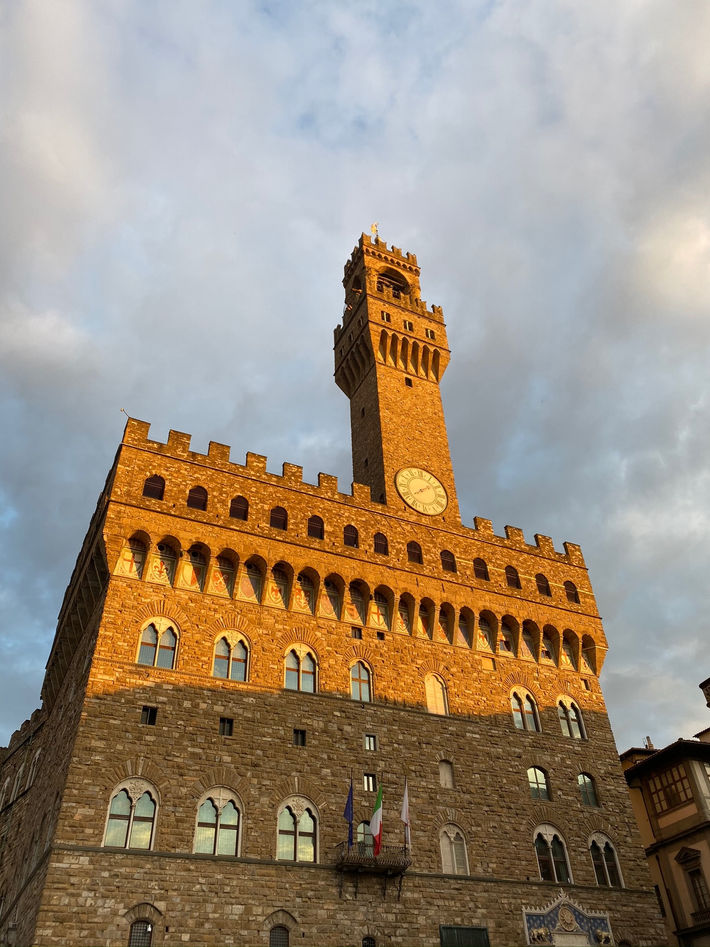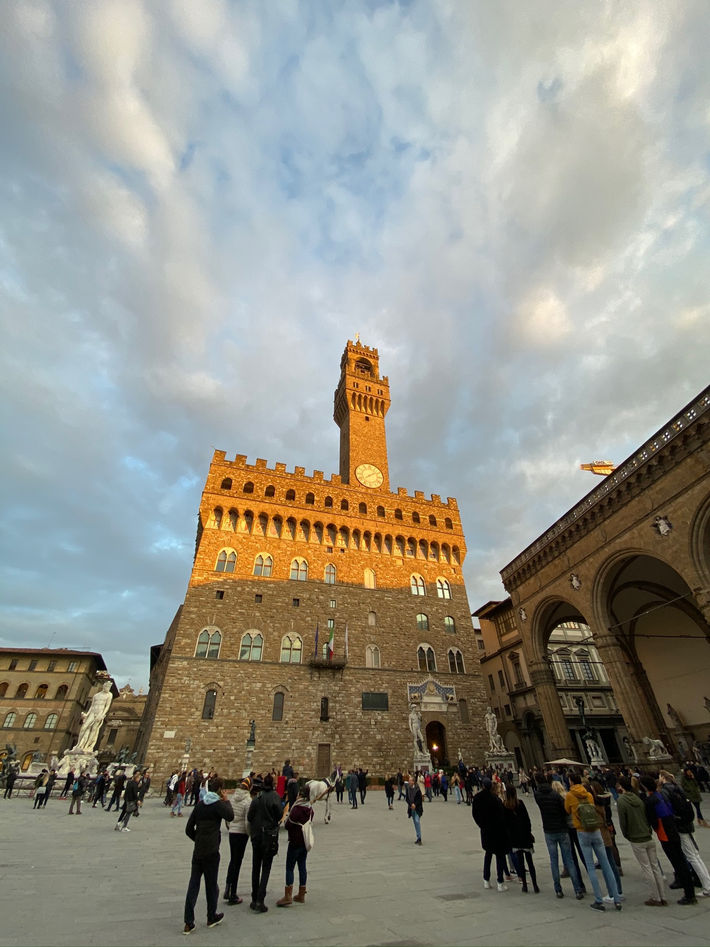Piazza della Signoria
Piazza della Signoria is a popular square in Florence and has a lot of historical relevance. The square, constructed in the 14th century, represents the origin of the Florence Republic. Piazza della Signoria has always been the center where all of the political life took place. It has the Palazzo Vecchio located inside of it, which has always been the building used by the government. The square has many statues in it that add beauty as well as were placed strategically in a political manner. For example, the historically very prominent wealthy family in Florence, the Medici's, put a statue in front of the Palazzo Vecchio of Hercules and Cacus in 1534. They placed this statue after their exile to show the people they are still a powerful family in Florence.
Additionally, there are many statues in the Loggia dei Lanzi, which is now an open-air sculpture gallery. One of the most politically prominent figures is the statue of Perseo, who is holding Medusa's head. This statue was crafted in 1554 and commissioned by the Medici's. The statue served as a reminder to the people to not cross the Medici family as their fate would be unfavorable if they did. Additionally, because the square has always been the center of political life, it was used as a place for public executions as well as a place to show off power.
An example of the darker history of Piazza della Signoria is the burnings that occurred during the Inquisition. The Catholic Church led the Inquisition, which took place in the 15th century. There were thousands of books, pieces of arts, mirrors, tapestries, musical instruments, and ancient manuscripts condemned as objects of sin, burned in Piazza della Signoria. The man who is responsible for what is now called the Bonfire of the vanities, Friar Girolamo Savonarola, who was a Dominican friar, ended up being burned in Piazza della Signoria in the same place where he held his bonfires of the vanities. He was condemned with heresy and sedition by Pope Alexander VI. He was hung on a cross and burned to death on May 23, 1498, in Piazza della Signoria right outside of Palazzo Vecchio. There is now a statue in the same place where Savonarola was burned.
Directors of many films utilize the rich and dark history of the piazza. One of the films that use Piazza della signoria is A Room with a View (1985) directed by James Ivory. In this film, the main character Lucy is exploring Florence on her own. She is very privileged and is typically accompanied by a chaperone, but she decides to explore the city by herself. However, she is overwhelmed in Piazza della Signoria when she sees Italian men get into a fight where one man dies. She becomes so shocked as she is not used to this violence, that she faints and is caught by the other main character, George, who happens to see her in the piazza. The scene acts as a catalyst for their romance and is very important to the movie. The director chose to have this scene in Pizza della Signoria because of its historic violent connotation. The director knew that Piazza della Signoria would be a perfect place to film a scene of violence because it has always been a place of violence.
Another film that utilizes the violent history of Piazza della Signoria is Hannibal (2001), directed by Ridley Scott. In this film, the main character, Hannibal, hangs the detective, Pazzi, out of the Palazzo Vecchio. Before hanging him, he cuts Pazzi, so that his bowels will hang out when he is hung. Hannibal purposefully does this because 500 years ago, Pazzi's ancestor was executed the same way in Piazza della Signoria. The storyline utilizes the full history and connotation of Piazza della Signoria in Hannibal to enhance the plot.


